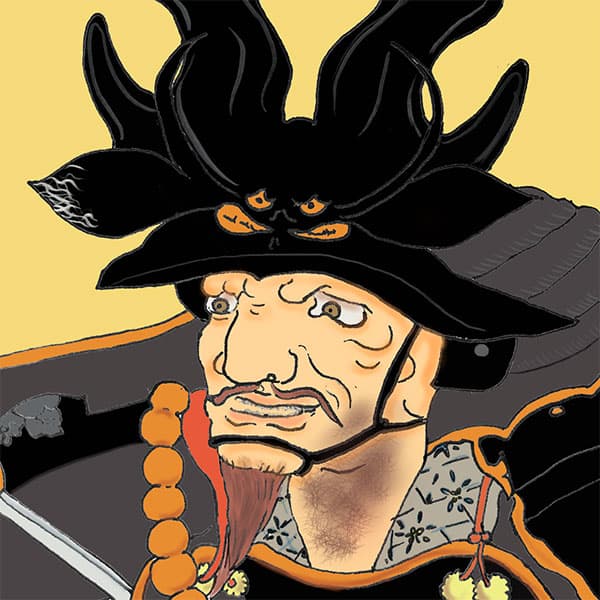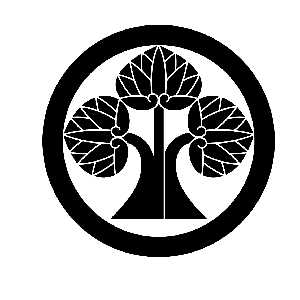- Otaki domainIt was once abolished
- Otaki Domain was a domain that existed in Isumi District, Kazusa Province, with Otaki Castle as the domain office. The first lord of the domain was Honda Tadakatsu, a senior vassal of Tokugawa Ieyasu. However, once the domain was abolished, it continued to exist as a domain with only 20,000 koku. Such a large number

Otaki CastleIsumi District, Chiba Prefecture
- TOP
- Kanto
- Chiba prefecture
- Otaki Castle
| Other name | Otaki Castle |
|---|---|
| castle construction | 1521 |
| address | 481 Otaki, Otaki-cho, Isumi-gun, Chiba Prefecture |
- Access to Otaki Castle
- 20 minutes walk from Isumi Railway Otaki Station.
HISTORYOtaki Castle built by the Tokugawa Four Heavenly Kings
Otaki Castle is a flat castle located in Otaki Town, Isumi District, Chiba Prefecture. It is said that it was built by Nobukiyo Mariya, a member of the Takeda family descended from the Kai-Takeda family, and that Tadakatsu Honda, one of the Four Heavenly Kings of Tokugawa, underwent major renovations and turned it into a modern castle. Let's unravel the history of Otaki Castle.
- Otaki Castle until Honda Tadakatsu became the castle owner
- The predecessor of Otaki Castle is Odaki Castle, which was built by Nobukiyo Mariya in 1521. Nobukiyo Mariya was the head of the Mariya Takeda clan, a faction of the Kazusa Takeda clan, and was a person who had a power struggle with the Chiba clan and the Hara clan in Kazusa. However, after his eldest son Tomonobu Mariya inherited the castle, it was taken by Tokishige Masaki, a military commander of the Satomi clan, and Odaki Castle became the property of the Masaki clan. Later, in the 9th year of Tensho (1581), during the era of Noritoki Masaki, the third lord of the castle, Masaki was murdered due to an internal conflict with Yoshiyori Satomi. The castle belonged to the Satomi clan, but in 1590, when the Satomi clan was confiscated from Kazusa province for violating the Sōkō edict, it was given to Tokugawa Ieyasu.
Tokugawa Ieyasu gave Odaki Castle to Honda Tadakatsu, one of the Tokugawa Four Heavenly Kings. He extensively renovated the castle, turning it into a modern castle, and renaming it Tadaki Castle. There was also a theory that Tadakatsu Honda built Tadaki Castle from scratch, but in recent excavations, the remains of a large castle were discovered beneath Tadaki Castle. This is thought to be the remains of Odaki Castle. Therefore, the prevailing theory is that Honda Tadakatsu significantly renovated the original Odaki Castle and built Otaki Castle. - Otaki Castle in the Edo period
- Otaki Castle during the Edo period functioned as the domain office of the Otaki domain until the end of the Edo period. A man named Rodrigo de Vivero (Don Rodrigo), who was the provisional governor of the Philippines during the era of Tadatomo Honda, the second feudal lord, was caught in a typhoon while sailing from Manila to Acapulco, and the Otaki domain was destroyed. It washed ashore in Iwada Village. After being rescued by local people, he was welcomed by the castle's lord, Tadatomo Honda, and even met Tokugawa Ieyasu. The record of this time is still preserved today as ``Don Rodrigo's Travels in Japan''. According to this, Otaki Castle had a palace decorated with gold and silver, a storage room with a large amount of weapons, and fields to prepare for the castle. From this description, we can see that it was a castle suitable for being a senior vassal of Tokugawa Ieyasu, who ruled the country.
However, in 1619, the Otaki domain was temporarily abolished when the feudal lord, Shoji Abe, moved his base. Approximately 60 years later, in 1672, when Abe Masaharu entered the castle with 16,000 koku, Otaki Castle was described as having "no single wall, no gates, no turrets, etc." It was so dilapidated. Although the shogunate issued an order to repair Otaki Castle, there is no record of the castle being extensively repaired, and it appears to have been used as a domain office in a semi-ruinous state.
In addition, there are records that the castle tower was burnt down in 1842, and a two-story structure called a "temple" was built in August 1844 in its place. - Otaki Castle after the Meiji period
- The castle was demolished in December 1871, and the Yakui-mon gate that had been used in Ninomaru Palace was donated to Chiba Prefectural Otaki High School. This gate was once dismantled and preserved, but it was restored in 1973 and still stands on the high school grounds.
Additionally, on the grounds of the same high school, there is a ``bottomless well'' that remains from the time when Tadakatsu Honda extensively renovated the castle. It is a large well that is said to have been equipped with 16 pulleys at the time to draw water. It has a diameter of 17m and a depth of 20m, and can currently be viewed through a fence. Please note that both the Yakui-mon Gate and the well are on the grounds of the high school, so please be sure to follow good manners when visiting, such as not entering unrelated areas.
In 1966, the castle ruins were designated as a historic site by Chiba Prefecture, and in 1975, the castle tower was rebuilt on the castle ruins based on the drawings from 1835. Inside was the Chiba Prefectural Sonan Museum. The museum is currently on an extended vacation for renovations, and visitors can only see the restored exterior.
Additionally, the Otaki Castle Festival is held every fall, with various events including a procession of feudal lords with people dressed up as Tadakatsu Honda and Don Rodrigo. - summary
- Otaki Castle was extensively renovated by Honda Tadakatsu, and at the time it was built, it was a magnificent castle worthy of a senior vassal of the Tokugawa clan. However, after the domain was temporarily abolished, the castle fell into disrepair, and even after the domain was restored, it never regained its former splendor. Only a few traces of those days remain, such as the Yakui-mon gate and the bottomless well at Chiba Prefectural Otaki High School. Even so, the Otaki Castle Festival, which is held every year, includes parades of feudal lords and other events, allowing you to remember the bustle of yesteryear. We are looking forward to the reopening of the museum.
Read biographies related to Otaki Castle
- Tadakatsu HondaA military commander who has both flowers and fruits and is highly rated by everyone.
- Long ago, samurai ran around Japan. The last time the samurai were active was the Edo period, which lasted for 250 years. Tokugawa Ieyasu established the Edo Shogunate. Tokugawa Ieyasu had a life of hardships from an early age, but in the end he became a ruler of Japan.

History of the Otaki domain, with Otaki Castle as its domain office
| Domain office | Otaki Castle |
|---|---|
| old area | Kazusa country |
| stone height | 20,000 koku |
| Fudai/Tozama | Fudai |
| main lord | Honda family, Abe family, Aoyama family, Abe family, Inagaki family, Matsudaira family |
| Estimated population | 21,000 people (first year of the Meiji era) |
After the conquest of Odawara in 1590, Tokugawa Ieyasu, who entered the Kanto region, gave 100,000 koku in Kazusa Province to Honda Tadakatsu, one of the Four Heavenly Kings of Tokugawa. Tadakatsu initially moved to Maki-jo Castle, but by 1591 at the latest, he moved his residence to Otaki-jo Castle. This is the origin of the Otaki domain.


















